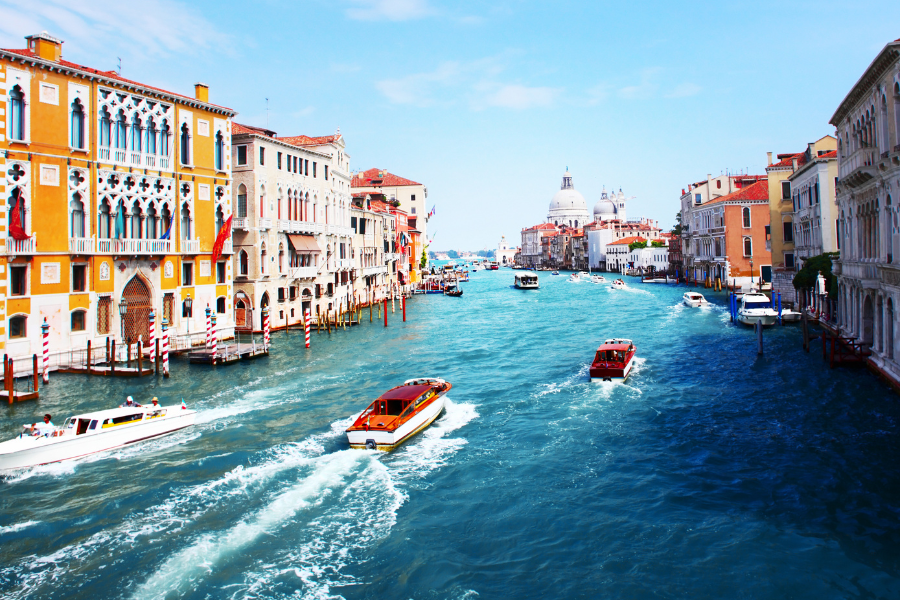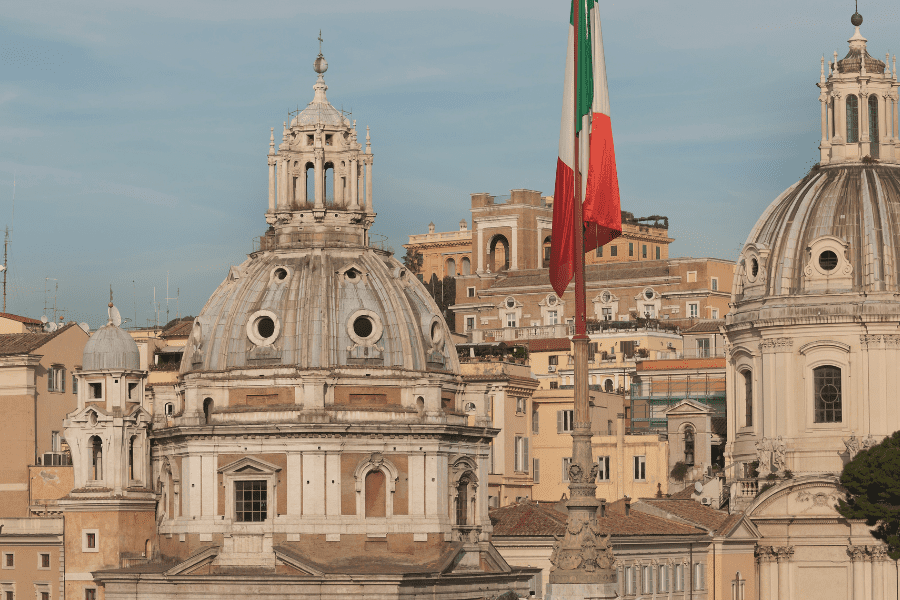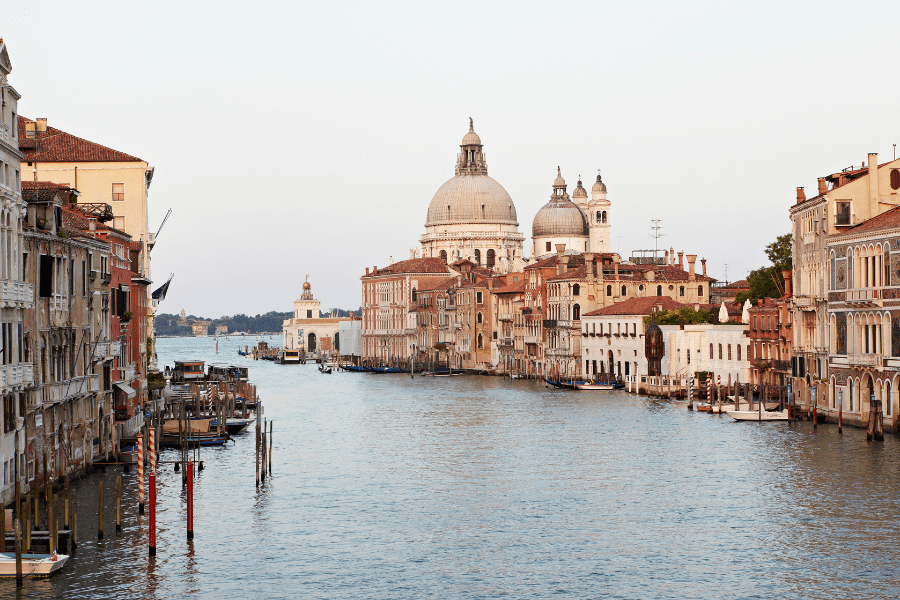Italy’s Flat Tax Regime: The Ultimate Guide
June 27, 2024
There are so many reasons why Italy is a world-renowned destination. From its friendly and welcoming people to its fascinating history and unrivalled art, the boot-shaped Mediterranean peninsula has something for all tastes.
If you’ve ever been skiing in the Italian Alps, enjoyed the sun-soaked beaches of the Amalfi coast, lost yourself in the tranquillity of Lake Como or marvelled at the splendour of Rome’s monuments, you will know this first hand.
With heavenly food, incredible wine and a unique blend of cultural influences, Italy delivers in spades on everything that makes life worth living.
And what’s more, there is considerable financial incentive for high-net-worth individuals to relocate there.
Traditionally, the country has a reputation for high taxes, with a progressive income tax system that targets the wealthy at higher rates, plus regional and municipal taxes. However, for foreigners who move there and become tax residents, a special flat-tax regime is available.

Italy – Country Overview
Italy is a southern European country with around 60 million people. It separates the Mediterranean from the Adriatic Sea. The Alps lie to the North of the country, where it shares land borders with France, Switzerland, Austria, Liechtenstein and Slovenia.
The tiny landlocked Republic of San Marino also lies within the Italian peninsula, some 227 kilometres (141 miles) from Rome. However, the exact distance varies depending on the route you take and the method of transportation you choose.
The capital city, Rome, dates back to the foundation of the Roman Kingdom (later the Republic and Roman Empire). Today, it remains one of the world’s great cities and a major tourist attraction.
In 1958, the Treaty of Rome gave birth to what would eventually become the European Union (EU). Italy was one of the founding members of Europe and the North Atlantic Treaty Organisation (NATO).
The country has a diverse economy. The North tends to be more industrialised, while the South is generally more agricultural. Italy’s commercial exports include many of the world’s most iconic luxury brands.
As a result, Italy is often synonymous with the finer things in life: good food, high culture, elegant architecture, luxury fashion and a strong automotive pedigree via brands like Alpha Romeo and Ferrari.
Visitors to Italy are seldom disappointed.
Until recently, it’s fair to say that Italy was an inviting country in every way except, perhaps, fiscally.
Hence, the traditional view of Italy as a country that combines the high taxes of countries like Germany with the baffling bureaucracies of Southern countries like Spain.
However, the flat-tax regime, introduced in 2017, changed all that.
So, let’s first take a look at Italy’s tax system and then see how these new rules have dramatically changed Italy’s tax landscape for foreigners.
Italy’s Tax System
Taxation in Italy is based on a progressive system. Those earning higher incomes pay a higher income tax rate than lower earners.
Italian tax rates vary, with progressive rates ranging from 23% to 43% of income, depending on how much you earn. As a result, the general consensus, certainly among locals, is that taxes in Italy are too high.
In addition, you also need to factor in variable regional and municipal income taxes, which are based on the national income bracket.
Meanwhile, Italy’s corporate tax rate is 24%, while capital gains are taxed at 26%. Put it all together, and it’s hardly a low-tax country.
But…
The Italian authorities recognised that some changes were necessary to improve the country’s competitiveness in attracting investment.
Italy’s Flat-Tax Regime
Italy now has flat-tax rules designed to make the country a more attractive destination for high-net-worth individuals.
The first of these is the 7% flat tax regime for retirees, which will be covered in more detail in a moment.
The second is a €100,000 cap on foreign income for high-net-worth individuals for a period of 15 years. These flat-tax rules serve as an incentive for foreigners to transfer their residence to Italy while also coaxing Italians living abroad to repatriate.
They also go quite a way towards rehabilitating Italy’s reputation as a country with Europe’s traditionally high taxes.
Among these potential new residents are those who can avail themselves of incentives that significantly reduce their tax burden. Italy, in turn, benefits from increased investment, new skills, the purchasing of real estate and greater revenue.
Who is Eligible for Italy’s Flat Tax?
Both of these flat taxes are available to individuals who transfer their tax residence to Italy.
To qualify, you must be deemed ‘newly resident’. This means that you have been a tax resident in another country for a specified period of time before moving to Italy.
For the 7% retiree flat-tax option, you need to have been out of the country for five tax years before moving to Italy. For the lump-sum tax option, you must have been a non-resident for at least nine out of the ten years prior to moving to Italy.
You can apply for this tax rate even if your country does not have a tax treaty with Italy.
Your nationality or domicile doesn’t matter, nor does the country you are moving from, as long as you have not been an Italian tax resident before the move.
So, Italians living abroad can also avail of this to repatriate, provided they have been living abroad for the requisite amount of time.
Meanwhile, those receiving worldwide income can opt only to be taxed on €100,000 of that income.
These flat tax regimes can also be extended to your family members, including your spouse and children. So, if you’re of Italian descent and have spent years dreaming of moving back to the ‘old country,’ these tax laws make it more enticing than ever.
You can move to Italy, enjoy a flat rate of tax on all your foreign-earned income, and potentially follow the process of citizenship by descent to obtain an Italian passport with visa-free travel throughout the EU.
What are the Benefits of Italy’s Flat Tax Regime?
The main benefits of Italy’s flat tax rules are extensive tax savings and the ability to extend those benefits to your family.
In the case of the 7% flat tax, there is no cap on the income earned. So, if you’re a pensioner looking to enjoy a taste of la dolce vita (the sweet life) in your autumn years, the tax savings could be significant.
For the 7% regime, you can then avail yourself of the flat rate for ten years. Your dependents who receive a foreign pension can also avail of this option.
For high-net-worth individuals, the Italian flat-tax regime provides an exemption on foreign-earned income, replacing it with a substitute tax on all worldwide income of just €100,000 per fiscal year for up to 15 years.
This regime can also be readily extended to your family members at an additional cost of €25,000 per member. Plus, you can enjoy a degree of flexibility in how you choose to avail of the regime.
Another benefit is that when transferring your tax residence to Italy, you only need to pay inheritance and donation taxes on assets or properties that originate within Italy.
You can then enjoy life in Italy, with access to other EU member countries, without worrying about any complications arising from your tax status.
Tax Residency in Italy
Tax residency in Italy follows the standard 183-day rule. So, if you reside in Italy for more than 183 days during a fiscal year, you are considered a tax resident of Italy.
In Italy, the factors which determine tax residency are:
- Being registered at the Anagrafe (citizen registry)
- Having a residence in Italy
- Having a domicile in the country through familial, social or financial ties demonstrates that Italy is where you have the most significant personal connection.
If you match just one of the above criteria at any point during a given tax year, you will be considered a tax resident in Italy.
Timing is critical when planning a move to Italy. Due to the difference in the tax year between your current tax residence and Italy, you may be eligible for an exemption on income and remittances.
This is why getting professional advice is so important and why Nomad Capitalist has a team of worldwide experts with expertise in this area. Our core business is helping investors and entrepreneurs reduce their tax burden by moving overseas. Talk to the Nomad Capitalist team about an Action Plan today to find out how much you could save.
What is the 7% flat tax in Italy?
Italy’s 7% tax regime for retirees gives holders of a foreign pension the chance to transfer their tax residence to one of the municipalities in the South of Italy.
This allows them to opt out of the standard progressive tax rate and pay just 7% on all foreign-sourced income.
Applicants can then enjoy exemptions on income tax and wealth tax on foreign-sourced income but are not exempt from inheritance or gift tax.
No social security payments are required, but any income derived from inside Italy will still be taxed at the applicable progressive tax rate.
To avail of this option, you first need to ensure you are a tax non-resident for a period of five years before transferring your tax residence to Italy. You must also demonstrate that you are receiving a foreign pension and have it paid into an Italian bank.
The type of pension (also known as state or private) is not clearly defined, so the law is widely interpreted to mean either foreign pensions or general income from abroad.
Once in place, this arrangement lasts up to ten years and is open to all, regardless of age or citizenship.

Italy’s Flat Tax Regime
This replaces the standard progressive income tax rate with an annual flat rate of €100,000 on all foreign-sourced income for a period of up to 15 years.
If you elect to pay the annual rate of €100,000, you will not pay income tax on the value of any of your foreign investments, such as stocks or real estate properties, but only on Italian-sourced income.
The regime also places no limit on lump-sum remittances, so you can bring money into the country and move it around freely without triggering additional income or capital gains taxes.
You are still eligible to pay gift tax and inheritance tax under the regime, but only on Italian-based assets. You will not pay anything on foreign income.
Controlled Foreign Company (CFC) rules do not apply under the regime, but permanent establishment (PE) rules do.
However, by appointing an overseas director, you can ensure a 50/50 split, effectively placing your company management overseas. So even if you choose to call yourself the CEO of that company, it will be considered a foreign company, and the €100,000 regime will still apply.
Income Covered Under the €100,000 Lump-Sum Regime
Italy’s flat €100,000 regime could result in significant tax savings for those who earn a substantial amount of their income from abroad.
Forms of foreign income covered under the regime include:
- Income from employment and self-employment
- Rental income
- Shares, dividends and other forms of financial income
- Other foreign sources of active or passive income.
The main takeaway here is that the €100,000 regime covers foreign income only, and any income deriving from inside Italy will be taxed at the standard applicable progressive rate.
Does the Flat-Tax Regime Include Crypto Assets?
Yes. Generally, anything from a foreign source is exempt under the €100,000 regime. With crypto, as with other assets, earnings will not be deemed locally sourced income unless those earnings derive from inside Italy.
So, for example, if you trade cryptocurrency using an Italian-based crypto trading platform, your income is deemed local, and you will be taxed. If you use a foreign platform, your income is foreign, and you will not be taxed.
This rule applies to any assets where the broker or account holding those assets is based overseas.
Applying for the €100,000 Flat-Tax Regime
Before applying for the flat-tax regime in Italy, you must first ensure you meet the two main conditions, which are:
- You need to move your tax residence to Italy
- Prior to this move, you must not have been a tax resident for nine out of the ten preceding tax years.
The application process then runs as follows:
- You file an inquiry with the Italian tax authorities, providing your personal details, financial information and residency status
- Your request will then be reviewed by the Italian tax authorities
- If accepted, you can apply for a visa in your home country’s Italian embassy or travel to Italy and apply for a residence permit.
Adding Family Members
Adding family members to this regime costs an additional annual fee of €25,000 per family member. There is no age requirement. This is only required if the family member(s) you wish to add are actively earning income.
So, if you have a spouse, for example, and wish to add them to the scheme, your joint maximum tax liability would be €125,00 annually.
Italy’s Residence Requirements
Once you are a resident of your chosen Italian municipality, you will then get a tax certificate. Obtaining this certificate is essential for filing your tax returns and verifying your tax residence.
Once you have this certificate, there is no real need to be a permanent resident of Italy. You are free to move, travel as you wish and spend time abroad, provided you spend 183 days per year in Italy. You do not have to spend all of your time in Italy and can still enjoy the benefits of the €100,000 regime for a total of 15 years, provided you retain your Italian tax residence.
The best way to guarantee this is to maintain a property or residence in Italy with bills in your name, or some other form of proof. This also helps to back up your claims of Italian residence from the point of view of other countries.
Can US Citizens avail of the €100,000 Regime?
Yes, but they will not be able to enjoy anything close to the full benefits that the €100,000 regime provides.
This is because, by law, the United States reserves the right to tax all US citizens, regardless of where in the world they reside.
So, if you are a US citizen living in Italy, you will still need to file taxes in the US. This is why it’s a good idea to file your tax returns in Italy first. Then, because the US and Italy have a tax treaty, you can opt to claim €100,000 in your US tax returns.
So, although they can’t enjoy the full benefits, US citizens can still avail of the regime and avoid paying taxes unnecessarily in Italy.
As a US expat living in Italy, this will most likely still be the best option from a tax savings point of view unless you’re prepared to renounce your citizenship and opt out of US taxes completely.
Italy’s Regional Relocation ‘Resident Worker’ Tax
Italy has a third type of tax regime for those relocating to Italy for work. It provides significant exemptions on income taxes based on where you relocate to. If you relocate to Northern Italy, you will be eligible for a 70% exemption on income taxes, while relocating to the South sees the exemption rate rise to 90%.
For example, if you earn €1 million in Northern Italy, you will pay tax only on €300k. And if you earn the same amount in Southern Italy, you will only pay tax on €100,000.
So, obviously, qualifying for this regime can be hugely beneficial if you plan to earn most of your income from inside Italy.
Under this rule, CFC and PE rules apply, as do blacklisted jurisdictions.
Unlike the €100,000 regime, the main focus of this regime is on Italian-source income. So, you can retain your business in the US and then invoice it to bring all or just some of that income into Italy.
You can extend this arrangement after five years if you have at least one child under 18 or if you purchased a home twelve months before or after moving to Italy.
How to Apply
To apply for Italy’s Resident Worker tax regime, you need to work and reside in Italy and meet the following criteria:
- Be resident outside of Italy for two years before applying
- Reside in Italy for at least two years after applying (or otherwise forfeit their tax exemptions)
- Predominantly earn your income within Italy.
The regime works for both employed and self-employed individuals, including entrepreneurs relocating to Italy to do business.
So, if you want to move to Italy and start a company there, you can still apply for this regime, provided your primary income is from Italy.
One thing to note is that you can apply even if you resided in Italy previously but neglected to remove your name from the Italian population registry and later became a tax resident in another country for two years.
This is a handy provision as it means that if you had resided in Italy for a while and then just picked up and left, even if your name stayed in the system, you could return after two years to claim these benefits.
With double taxation treaties, as long as you can prove your tax residence elsewhere, any outdated records are essentially overruled.

Southern Provinces Offering 90% Tax Exemption
Since the North of Italy is home to the country’s major financial and population centres, the South is generally more in need of investment.
For this reason, the Italian state offers a 20% higher incentive for foreigners to relocate there. Though with 90% in the South versus a 70% exemption in the North, the exemption rates are still high in either case.
However, if you opt to relocate to the South, you are eligible to pay tax on only 10% of your annual income.
The following provinces offer a 90% regional tax exemption:
- Abruzzo
- Basilicata
- Calabria
- Campania
- Molise
- Puglia
- Sardinia
- Sicily.
North or South?
While the financial incentives of the South over Northern Italy are obvious, other factors may decide where in Italy you wish to reside.
Stylish Milan and the capital, Rome, offer a high level of English fluency, while the beautiful province of Tuscany remains particularly popular with expats.
The South may offer greater tax incentives, but as many areas are more traditional, you may find it harder to integrate. But if you’re persistent, you can find a more authentic taste of Italian life there.
In the end, it comes down to whether you wish to be more connected to Italy or to the outside world. Will you feel more at home in the fast-paced metropolitan North or the slower, more Mediterranean South?
Like many countries, particularly in Europe, regional North versus South stereotypes are quite prevalent in Italy. So instead of giving them too much credence, we urge you to explore as much of this beautiful country as you can and make up your own mind.
The goal, after all, is to find the perfect place in Italy where you can move and enjoy the tax benefits for the next five years.
Of course, local residents will be more than happy to share their opinions on where they think is best, but their input, while potentially valuable, certainly won’t be impartial.
But at Nomad Capitalist, we want to ensure you get the complete picture with access to the most up-to-date information available. That way, you can weigh up your options and make the best choices.
Plus, you gain the benefit of our years of extensive experience in international relocation backed up by our network of trusted partners on the ground.
Looking to move to Italy? Interested in a new home in Europe but not sure where? Our team is standing by to tackle these uncertainties and turn them into lucrative realities.
To discover how you can reduce your tax burden and transform your life for the better, talk to us and let us craft your plan today.

Italy’s Flat Tax Regime: FAQs
The general view held by Italian residents is that their taxes are too high. The Italian national income tax uses progressive tax rates. So, your tax liability changes based on how much you earn. This can range from 23% to 43%, plus regional taxes, of income and applies to all tax-resident individuals in Italy.
Yes. A flat tax regime exists, which can help reduce either the tax amount on worldwide income or reduce the burden of business income originating from inside Italy.
The government has taken steps to make the country more appealing to foreign investors. The flat €100,000 regime for tax-resident individuals can significantly reduce the amount of tax payable on their foreign-earned income.
The income tax exemptions for foreign tax residents who wish to work in Italy also help to significantly reduce the personal income tax burden of employees and entrepreneurs alike. This employment income-related regime can also extend to self-employed individuals or business income from new entrepreneurs looking to set up shop in Italy.
The Corporate income tax rate is 24%, slightly higher than the EU average of 21.3%.
Yes, in addition to national income tax, you also pay regional and municipal income tax. The regional income tax and municipal income tax rates vary based on where you are located but work on the same progressive system as the national income tax.
All tax-resident individuals are subject to taxes on their personal income. You will be deemed an Italian tax resident if you have stayed in the country for more than 183 days. However, under the flat-tax regime, you can pay a substitute tax of €100,000 on your worldwide income.
However, any capital gain you make on Italian-sourced income, including business income or income from real estate properties, will be taxed at the usual rate.
Planning Your Next Move
Taxes in Italy can be confusing, and you must be careful not to end up paying additional tax or, worse, fall foul of double taxation. First, there are all the different types of income tax, national income tax, regional income tax, municipal income tax, not to mention corporate income tax and wealth tax – even Italian residents find it confusing sometimes.
Even if your home country has a double taxation treaty, things can still get tricky. So, you want to understand the relevant tax credit mechanism to make sure any tax paid can be converted to foreign tax credits.
As always, we advise you to seek professional advice before making any moves and at Nomad Capitalist, we make it a whole lot simpler.
Our business is helping people just like you enjoy the benefits of overseas relocation and restructuring for tax purposes. We want to ensure you’re not paying additional tax while also helping you find the destination that best suits your holistic needs.


Does Puerto Rico Pay Taxes to the US?
It’s a common question and one that often fuels confusion, debate, and a fair share of misinformation – Do residents of Puerto Rico actually pay US federal taxes? When most people think of US tax obligations, they naturally assume they apply uniformly across all US citizens. But when it comes to Puerto Rico, things are […]
Read more

How to Eliminate US Expat Taxes (by Renouncing)
A common myth persists among many Americans that they can’t benefit from the same tax-saving opportunities as other expats when moving overseas. That misconception is rooted in the United States’ insistence on implementing citizenship-based taxation, requiring their citizens to report and pay tax on their worldwide income – regardless of where they live. As a […]
Read more

How to Pay Zero Tax in Latin America
Latin America has a reputation among many investors as a ‘tax hell’, and its headline tax rates seem to bear out this theory. Colombia taxes top earners at 39%, Ecuador at 37%, and Chile climbs to 35.5%. Those aren’t tax rates to sniff at – they’d make a freedom-sized hole in any annual tax return. […]
Read more




